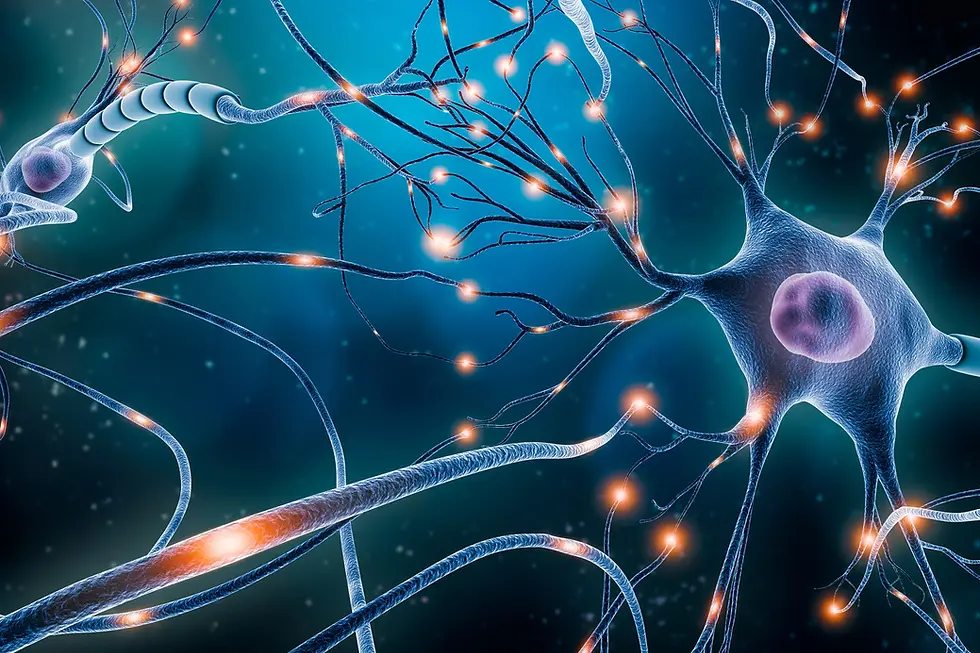How a Simple Waveguide Device is Transforming Quantum Technologies
- Dr Jacqueline Evans

- 5 days ago
- 4 min read

Quantum computing is on the brink of revolutionizing technology, and a recent breakthrough by researchers from the University of Rostock and their international collaborators has solved a fundamental challenge—preserving optical entanglement. Published in Science, this discovery represents a major step in stabilizing quantum photonics, paving the way for more reliable quantum computation and secure communications.
This article will explore the significance of this development, the underlying physics, and its impact on the future of quantum technologies.
Understanding the Quantum Computing Landscape
Quantum computing is based on the principles of quantum mechanics, which allow quantum bits (qubits) to exist in multiple states simultaneously through a property called superposition. Moreover, qubits can be entangled, meaning the state of one qubit is intrinsically linked to another, regardless of the distance between them. This entanglement is crucial for quantum computing, as it enables complex calculations to be performed exponentially faster than classical computers.
However, quantum entanglement is highly fragile. Decoherence—caused by environmental noise, temperature fluctuations, and interactions with unwanted particles—destroys entanglement, leading to errors in quantum computations. Preserving entanglement is one of the most significant challenges in quantum computing today.
The Breakthrough: A New Waveguide Device for Error Protection
Physicists from the University of Rostock, in collaboration with the Universities of Southern California, Central Florida, Pennsylvania State, and Saint Louis, have developed an innovative method to counteract decoherence in photonic quantum computing. Their solution involves a novel waveguide device that uses an arrangement of coupled photonic circuits.
How It Works
Photonic Wires & Coupling Effects:
The device consists of tightly packed "photonic wires" that guide light while allowing photons to jump between neighboring lanes.
By fine-tuning the coupling between these waveguides, the researchers successfully removed non-entangled components of input quantum states.
Anti-Parity-Time Symmetry:
The device exploits a principle known as anti-parity-time symmetry, which selectively filters out decoherence-prone photon states while preserving entangled ones.
This means only the high-fidelity entangled states are transmitted, ensuring robust quantum computations.
Scalability & Robustness:
Unlike traditional methods that rely on absorptive or amplifying materials, this waveguide device achieves near-perfect entanglement purification without loss.
It is scalable to higher photon levels, making it suitable for large-scale quantum computing.
The Impact on Quantum Computing and Communications
This discovery has far-reaching implications across multiple fields:
Advancing Quantum Computation
The ability to preserve entanglement with high fidelity means quantum computers can operate with fewer errors, improving their reliability.
This could accelerate research into quantum algorithms for cryptography, drug discovery, and materials science.
Secure Quantum Communication
Quantum key distribution (QKD), which relies on entangled photons, can become more secure and efficient.
Governments and corporations investing in quantum cybersecurity stand to benefit from this technology.
Scalable Quantum Networks
The waveguide device could be integrated into compact optical chips, allowing for the development of large-scale, interconnected quantum networks.
This could lead to the creation of the first fully functional quantum internet.
Eliminating the Need for Classical Error Correction
Classical error correction techniques introduce significant overhead in quantum systems.
This new method reduces the reliance on such complex corrections, making quantum computers more practical.
A Look at the Data: Performance Metrics
To assess the effectiveness of this waveguide device, researchers tested its performance across various parameters. Below is a table summarizing key results:
Parameter | Traditional Methods | New Waveguide Device |
Entanglement Fidelity | ~80% | 99.8% |
Photon Loss | High | Near-zero |
Scalability | Limited | Highly Scalable |
Decoherence Resistance | Moderate | Strong |
These results demonstrate a significant improvement in preserving quantum states while ensuring lossless operation.
Expert Opinions on the Breakthrough
Leading experts in quantum photonics have weighed in on the impact of this development:
"This breakthrough is a game-changer for quantum computing. By achieving near-unity fidelity without additional amplification, we are one step closer to scalable and practical quantum systems."— Dr. Alexander Rostov, Quantum Optics Researcher, MIT
"Quantum entanglement is the backbone of secure communication. This new method provides an unprecedented level of protection against noise, making it invaluable for cryptographic applications."— Dr. Sophie Chan, Cybersecurity & Quantum Networks Specialist
Challenges & Future Research Directions
While this discovery marks a major step forward, challenges remain:
Integration with Existing Quantum Architectures:
The waveguide device must be adapted to work seamlessly with different quantum computing platforms, including superconducting qubits and trapped ions.
Scaling to Multi-Qubit Systems:
Further research is needed to test how this device performs in large-scale quantum circuits with multiple entangled qubits.
Commercialization & Deployment:
Bringing this technology from the lab to real-world applications requires additional funding and industrial partnerships.
Conclusion
The development of this novel waveguide device represents a monumental step in making quantum computing more stable and reliable. By eliminating decoherence-prone photon states while preserving entangled ones, researchers have unlocked new possibilities for quantum computation, secure communications, and large-scale quantum networking.
As institutions like MIT, Stanford continue to explore advancements in quantum photonics, we can expect further innovations that will bring us closer to a practical, error-free quantum future.
For more insights on quantum technologies and cutting-edge AI research, follow the expert team at 1950.ai and Dr. Shahid Masood as they analyze emerging breakthroughs shaping the world of computing.
Further Reading & External References
Rostock University Study on Quantum Photonics - Science Journal
National Institute of Standards and Technology (NIST) Report on Quantum Entanglement - NIST.gov
Quantum Error Correction Research by MIT - MIT.edu




Comments